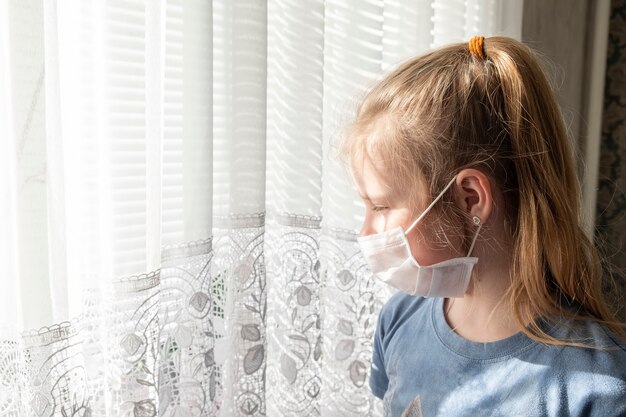Can Baby Oil Lead to Pneumonia? What Parents Should Know
In the everyday world of parenting, ensuring safety can sometimes feel like a daunting task. From mealtime mishaps to playground scrapes, parents need to be on alert. But when it comes to unexpected sources of health risks, even common household items like baby oil can pose questions. Can baby oil cause pneumonia? Read on to unpack this surprising connection and what you can do to keep your little one safe.
What is Baby Oil and Its Common Uses?
Understanding Baby Oil
Baby oil is a gentle, mineral-based product that is primarily used to moisturize a baby's sensitive skin. It is a clear, fragrance-free, and highly refined product, appealing to parents for its intended non-toxic properties. Notably, baby oil can also be used by adults as a skin moisturizer, makeup remover, or even part of a post-bath ritual for a luxurious feel.
Popular Uses of Baby Oil
- Skin Moisturization: Sealing in moisture on baby's skin after a bath.
- Cradle Cap Treatment: Softening and loosening flaky skin on a baby’s scalp.
- Massage Oil: For calming massages, promoting bonding between parent and child.
- Adult Skincare: Used as a regular moisturizer or makeup remover for adults.
Can Baby Oil Actually Cause Pneumonia?
Understanding the Risk
The thought that baby oil might be connected to pneumonia is indeed perplexing, but there's scientific reasoning behind it. The issue is aspiration pneumonia, a condition that results when foreign materials, including liquid, enter the lungs.
What is Aspiration Pneumonia?
- Definition: It occurs when liquids, such as oils or other foreign substances, are inhaled into the lungs instead of being swallowed or removed from the airway.
- Cause: If a substance like baby oil gets into the respiratory tract, it can cause inflammation and infection in the lungs, leading to pneumonia.
How Baby Oil Can Enter the Lungs
While baby oil is generally safe for topical use, the risk emerges during activities like using the oil around the nose and mouth. Babies have a strong tendency to explore the world by putting things in their mouths, including little fingers covered in baby oil. If the oil is accidentally inhaled instead of being swallowed, it may lead to aspiration and eventually respiratory problems.
Symptoms and Identification
Recognizing Aspiration Pneumonia Symptoms
Identifying aspiration pneumonia early can lead to more effective management. Here’s what to look out for:
- Coughing: Persistent or severe coughing, especially after feeding or applying baby oil.
- Difficulty Breathing: Shortness of breath or labored breathing.
- Fever: Unexplained fever coupled with coughing.
- Wheezing: A high-pitched sound heard during breathing.
- Lethargy: Unexpected tiredness or lack of energy.
Precautionary Measures and Safer Alternatives
How to Use Baby Oil Safely
To minimize risk, it's crucial to apply baby oil carefully. Here are some practical tips:
- Avoid Facial Application: Refrain from using baby oil on or near the baby's nose and mouth.
- Supervise Use: Always supervise when oil is applied to prevent unintentional inhalation.
- Hand Cleaning: After applying oil, wash your hands and the baby’s hands to prevent accidental ingestion.
- Use a Cloth: Apply the baby oil to a cloth and gently rub it on the skin rather than applying directly.
Safer Alternatives
While baby oil serves many purposes, alternatives can offer similar benefits with potentially reduced risks:
- Natural Oils: Coconut oil or olive oil can be used as natural alternatives for moisturizing.
- Hypoallergenic Lotions: These are designed to be gentle on sensitive skin and may be less risky if accidentally ingested.
- Aloe Vera Gel: Used for skin hydration and soothing minor irritations.
Other Health Concerns with Baby Oil
Beyond Pneumonia
While the focus is often on aspiration risks, understanding any product's potential drawbacks is crucial. Monitoring for allergic reactions or skin sensitivities when using baby oil is wise.
Addressing Skin Concerns
- Patch Test: Before applying liberally, do a small patch test on the baby’s skin to check for any adverse reaction.
- Observation: Look for signs of irritation or allergic reactions such as redness, itching, or rash.
Babyproofing Your Routine
Building a Safe Environment
Creating a safe environment goes beyond managing baby oil use. It includes understanding how everyday practices impact your baby’s health.
Essential Safety Tips:
- Secure Products: Always store oils and lotions out of reach of children.
- Educate: As children grow, teach them the importance of not ingesting non-food items.
- Emergency Preparedness: Know when to seek medical aid if you suspect harmful ingestion or inhalation.
Creating Awareness
Ensuring caregivers, babysitters, and family members understand these risks can help maintain consistency in your child’s safety routine.
Emphasizing the Importance of Communication with Healthcare Providers
When in Doubt, Consult a Professional
If you suspect your child has inhaled or ingested baby oil and shows symptoms of distress, contact a healthcare provider immediately. Sharing accurate information can lead to prompt medical intervention, potentially preventing complications.
Questions You May Consider Asking:
- Symptoms to Watch: What specific symptoms should indicate a need to seek immediate care?
- Alternative Products: Are there recommended products that reduce risk without losing benefit?
- Safety Practices: What guidelines should be followed for safe use of topical products?
Health professionals can offer tailored advice and insights into best practices, ensuring peace of mind as you care for your child.
Summary of Key Takeaways:
🔸 Aspiration Risk: Baby oil is safe for skin but can lead to aspiration pneumonia if inhaled.
🔸 Safe Use Practices: Avoid facial application; supervise use; use alternatives like natural oils or hypoallergenic lotions.
🔸 Awareness & Education: Equip caregivers; secure products; consult doctors when needed for tailored advice.
🔸 Watch for Symptoms: Persistent cough, labored breathing, and fever require prompt attention.
🔸 Emergency Preparedness: Know the steps for emergency care, and maintain open communication with healthcare providers. 💬
By understanding these factors, parents can use baby oil judiciously, safeguarding their children against potential health risks while still reaping the benefits of its intended uses.
